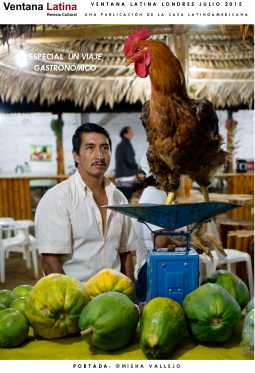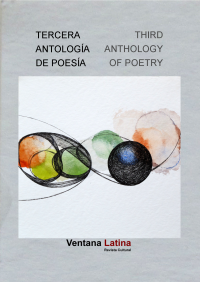¿Qué Onda?: A glimpse into Mexican Onda Literature
By Dr Victoria Carpenter, Reader in Latin American Studies, University of Derby
What was Mexican literature like in the 1960s? The world was learning to deal with the flourishing of a new kind of popular culture, and artistic expression was beginning to take rather inventive (not to say, unexpected) forms; the Beatles were rocking out and Beat writers were experimenting with spontaneous texts and Eastern philosophy. What authors was Mexico contributing to contemporary youth culture?
Some might answer Carlos Fuentes. Some might venture as far as to say, José Carlos Becerra. But very few, if any, will consider the literary movement of La Onda to be part of the Mexican youth culture of the 1960s. Disregarded or chastised, its loyalty to the contemporary youth movement questioned, Onda literature was criticised by writers young and experienced alike for being too pretentious, too steeped in Anglophone popular culture, too unsophisticated. Some contemporaries of the Onda disavowed any association with it – Mexican writer René Aviles Fabila’s categorical remarks that he was not ‘one of the Onda’ are probably the most memorable. And yet the Onda literary phenomenon is still there, explored but not fully understood, the names of the three best Onda writers almost never mentioned alongside their contemporary greats.
Let’s mention them. The three writers whose work constituted the greatest literary contribution to the Onda movement in Mexico from the mid-1960s to the early 1970s were:
José Agustín (1944, Acapulco)
Gustavo Sainz (1940, Mexico City)
Parménides García Saldaña (1944, Orizaba – 1982, Mexico City)
I won’t go into their biographical details; instead, I’ll recommend a wonderful book by Elena Poniatowska, Ay vida, no me mereces (1985), which explores the characters of the three writers in amusing and often provocative vignettes. The one about García Saldaña is particularly intriguing, considering that barely anything has been written about him. No wonder he is largely ignored: he did not fit the model of a clean youth supported by government grants to publish his books. Instead, he drank, listened to rock music, wrote strange novels and stories, and died young.
A couple of ruminations on a few works by the Onda should whet your appetite.
José Agustín’s ‘La Tumba’ is the starting point of the movement. Written in 1964, it’s a story within a story within a story. Good luck finding the original storyline. Here’s a hint: it’s in more than one place. And don’t believe anything you read in any of the storylines (with the possible exception of one scene, but I won’t ruin it for you).
Another story by Agustín, ‘¿Cuál es la onda?’ (1968), is a fun and challenging read mimicking a lot of contemporary experiments with language, sounds, and visual representations of texts. The story is about Oliveira, a drummer in a rock n’ roll band (the name is the same as that of the protagonist in Julio Cortázar’s novel Rayuela) and Requelle (which is frequently used as a rhyme with the Beatles’ Michelle). The two meet in a bar where Oliveira’s band plays and, after striking a rather bizarre conversation in Spanish, English, German, and French, Oliveira and Requelle go for a walk, looking for a hotel to make love in. After a night full of madcap events, including a fight with a hotel manager and a taxi driver, the two walk off into a proverbial sunrise. As trite as the plot may be, it’s the language we are interested in – a jumble of classical and contemporary popular references, inside jokes and visual textual disruptions, which lead the reader down a dizzying maze of something akin to an acid trip.
Gustavo Sainz’s acclaimed novel Gazapo (1965) appeared to have cemented the Onda style as yet another case of an emerging writer mixing Lawrence Durrell with Jack Kerouac and a splash of Carlos Fuentes. But I find his later novel, the Onda’s ‘dirty secret’ Obsesivos días circulares (1968), a much more engaging piece. If you thought ‘La Tumba’ was exciting to trace, set aside a week and give yourself a real treat. The novel has several plots, none of which have anything to do with the outcome (if there is one). All the critics analysing this novel agree that they have no idea what is going on, save for the fact that the narrator is mad. After reading the first 160 page of it, I was inclined to believe it and ready to accept defeat when I decided to read something else. Not the novel but the things inserted into it. Like magic, things started to make sense. Try it and see what happens.
Parménides García Saldaña’s works were few and far between (he published two books: Pasto Verde (1969), and El rey criollo (1971)), and very few studies of his writing exist, save for a brief mention here and there. But his style is probably the best example of the Onda’s ability to fuse the traditional and the popular without allowing either to dominate the other. His stories in the collection El rey criollo are inspired in equal measure by the Rolling Stones, Mexican popular music of the early 1960s, English modernism, and Beat culture. The two books are hard to find but worth making an effort for, especially El rey criollo. Some stories are downright strange: for example, ‘Goodbye Belinda’ is an experiment in seeing how bizarre a storyline can get if one of the protagonists changes over and over again to accommodate the resulting changes in the storyline. And all stories are preceded by a translated text of a song by the Rolling Stones, with some curious mistranslations thrown in for good measure.
The Onda’s contribution to contemporary Mexican literature may not have been as voluminous and diverse as that of the Narrativa Joven movement of the 1970s, but it is undoubtedly an important part of Mexican culture. By bringing together classical and popular expression, the Onda bridged the gap between the two as best it could, showing that such union does not destroy the text – instead, it challenges us to an intellectual game with what we are reading.








 Copyright © 2024 Company no. 6720498 10 Kingsgate Place, London NW6 4TA, United Kingdom Tel: 020 7372 8653
Copyright © 2024 Company no. 6720498 10 Kingsgate Place, London NW6 4TA, United Kingdom Tel: 020 7372 8653